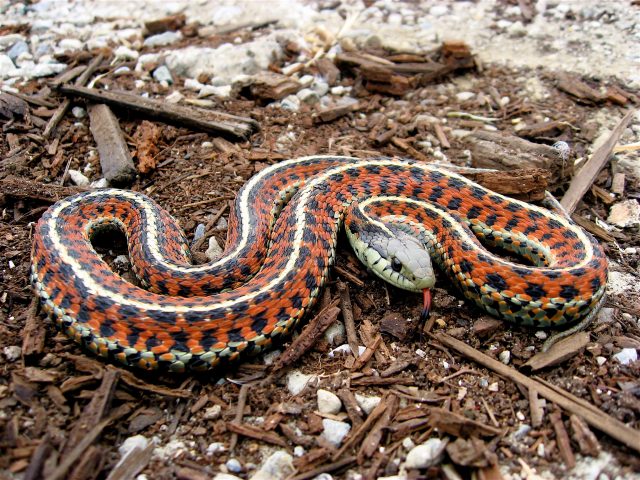MI weekly selection #47

Brains wired to be wary of snakes
The brain is wired to detect the threat of snakes, according to a study published in the Proceedings of the National Academy of Sciences. Researchers studied a pair of macaque monkeys born in captivity who had not encountered snakes before the experiment. When shown an image of a snake, the monkeys’ brains fired off rapid fear responses far stronger than those recorded when other threatening images were shown.
Flying robot can right itself after collisions
Researchers have created a flying robot that can be used to enter areas hazardous to humans. The gyroscopic robot, called Gimball, can bounce off walls and right itself in the event of a collision, and was inspired in part by the way insects fly.
Scientists create first map of human HIV resistance
Genetic researchers have analyzed the genomes of strains of HIV from 1,071 individuals and retraced how the immune system fights the virus, producing the first map of human AIDS resistance. According to research published in the journal eLife, researchers used supercomputers to cross 3,000 genetic mutations with more than 6 million variations in the genes of HIV patients to trace how the virus interacted with different genes to survive. Scientists believe that by profiling the genome of HIV-infected people, it will be possible to develop individually targeted treatments that take into account the patient’s genetic strengths and weaknesses.
Origin of underwater Antarctic volcanoes
The Marie Byrd Seamounts, a group of eight large volcanoes on the seafloor off the coast of West Antarctica, were formed about 60 million years ago when part of the Earth’s crust pulled apart and fossilized mantle-plume material escaped to the surface, according to a report by Germany’s GEOMAR Helmholtz Center for Ocean Research Kiehl. This goes against another theory that they were formed by a hotspot.
Australia’s oldest known bird tracks date to Early Cretaceous period
Two sets of fossilized footprints found in Victoria, Australia, are those of birds during the Early Cretaceous period, which would make them the oldest bird tracks found on the continent.